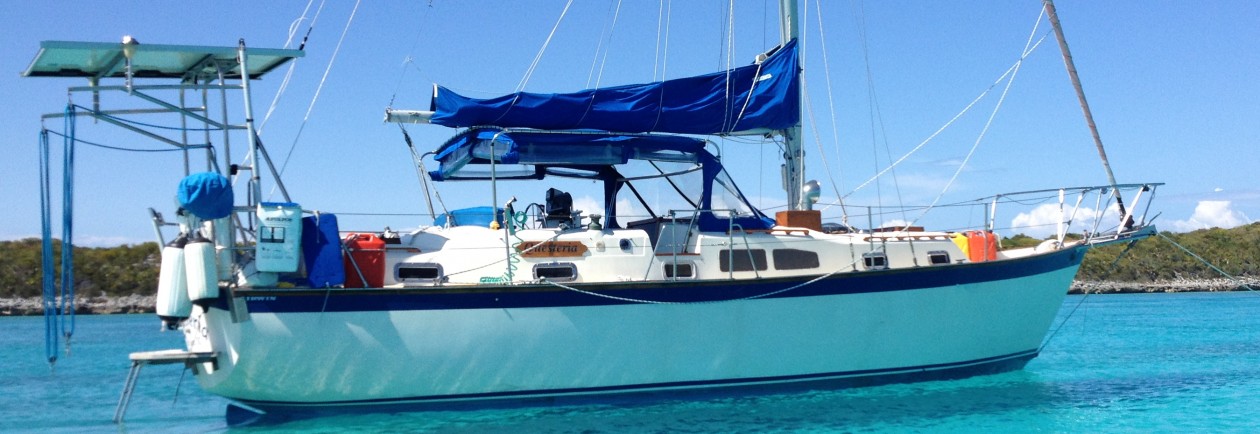In 2015 we installed an evaporator plate in our freezer. (Refer to post New 12 Volt Freezer.) In this post I describe how we upgraded it to run on shore power, as well as batteries.
When we bought Questeria, the only way to run the freezer was on shore power. The compressor is very loud, but fortunately it only runs for about an hour, a few times a day. This is because it charges a cold plate. Once the cold plate comes to temperature, it shuts off. This is a nice feature when cruising, because we can run the generator for few hours a day and keep our food frozen. But, it’s loud, especially when it first starts, and it comes on randomly. We might be just starting to fall asleep, or listening to music, and startles us.
We installed an additional 12 volt compressor and evaporator plate for when we are not connected to shore power. This runs more often, but is very quiet. It runs off of our house batteries. We don’t run it when connected to shore power, because it may drain our batteries.
This system worked out great when we were cruising in the Bahamas. Our solar panels would usually keep our house batteries charged and run our 12 volt freezer and refrigerator, as well as everything else. We only had to run our Honda 2000 generator when we didn’t have enough sun.
We were away from the boat for a while. See 2019 RV Trip—Alaska. We left Questeria in our marina, in Marathon, FL. We emptied the freezer and unplugged it.
When we returned to Questeria, we needed to start the freezer so we could transfer frozen food from the RV to the boat. We didn’t have enough battery power to run the 12 volt compressor. We didn’t want to our battery charger, because we had already burned up one battery—they are old, and need to be replaced. So, we would have to use the 110vac compressor/cold plate, but we had a different idea…
The compressor/cold plate has served us well in the fourteen years we have owned Questeria, but it has it’s disadvantages.
- It is loud and comes on any time of the day or night.
- It doesn’t have a thermostat—it uses a pressure sensor to turn on and off. It’s difficult to adjust so that it is cold enough, but shuts off in a timely manner—it tends to run continuously.
- It generates a lot of heat when it’s running.
- It’s old. We aren’t sure how much longer it will keep going.
- It only brings the temperature down to about 20°F, ideally, you want it at 0°F.
… Our idea, was to run our 12 volt compressor on a convertor, when on shore power. A converter creates 12 volts DC from 110 volts AC.
- We can switch between shore power and battery.
- It’s much quieter than the 110vac compressor/cold plate.
- It has a thermostat—we can better regulate the temperature.
- The convertor can be used as a battery charger in a pinch.
I ordered a convertor from Amazon.com. It’s a 30 amp, which is way overkill, but I wanted something with good DC output voltage, and this was best and smallest one I found. I installed it in stages. I needed to get the freezer running on shore power quickly because our house batteries were failing.
At first, I plugged the input into an extension core and wired the output directly to the compressor. Later, I mounted it, and then, I wired the input to a 110vac circuit breaker on our electrical panel. Finally, I wired in a DPDT switch so I can switch between the converter and batteries. I left the old compressor as a back-up,
So far, we are happy with our modification. We have a full freezer that operates quietly and doesn’t drain our batteries when we are connected to shore power. We installed new batteries and our solar panels keep them charged, without running the battery charger.
